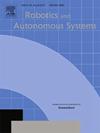基于脉冲神经网络关联映射的路径跟踪控制
IF 4.3
2区 计算机科学
Q1 AUTOMATION & CONTROL SYSTEMS
引用次数: 0
摘要
仿生控制系统在科学界引起了极大的兴趣。神经系统的优势在于其适应控制过程的能力。自动驾驶车辆和高级驾驶员辅助系统中的路径跟踪任务是与车辆安全和性能相关的重要组成部分。众所周知,基于模型的控制器将车辆模型集成到控制逻辑中,比基于几何的控制器更有效。然而,基于模型的控制器的一个缺点是缺乏对变化的车辆动态条件的适应能力。为了解决这一问题,提出了一种基于神经网络,特别是脉冲神经网络和关联映射的路径跟踪任务自适应神经控制器。因此,通过非线性突触连接的建模,将关联映射和神经插值引入到峰值神经网络中来执行自适应控制任务。神经关联映射用于推导神经输入和输出之间的函数关系,进一步增强推理能力。此外,具有非线性突触连接的神经插值实现了有效的两两关联。因此,通过使用具有学习能力的神经网络再现线性二次调节器,可以通过峰值时间依赖的可塑性来调整动态中的差异和变化。结果表明,自适应控制器能够有效地保持车辆的初始跟踪性能,同时适应不断变化的动态条件,计算成本允许实时执行。在学习过程中,所提出的策略在横向跟踪中误差水平较低,同时在航向上提供相似的性能。本文章由计算机程序翻译,如有差异,请以英文原文为准。
Path-following control using spiking neural networks associative maps
Bio-inspired control systems attract significant interest in the scientific community. The advantage of neural systems lies in their ability to adapt to control processes. Path-following tasks in automated vehicles and advanced driver assistance systems are an essential component related to vehicle safety and performance. It is known that model-based controllers, which integrate a vehicle model into the control logic, are more effective than geometry-based controllers. However, a disadvantage of model-based controllers is the lack of adaptation capability to changing vehicle dynamic conditions. To address this issue, an adaptive neural controller for path-following tasks is proposed based on neural networks, particularly Spiking Neural Networks and Associative Maps. Consequently, associative maps and neural interpolation via the modelling of non-linear synaptic connections are brought to a spiking neural network to perform adaptive control tasks. Neural associative maps are used to derive functional relationships between neural inputs and outputs, further enhancing inference capabilities. In addition, neural interpolation with non-linear synaptic connections enables efficient pairwise association. Thus, by reproducing a linear quadratic regulator with a learning-capable neural network, it is possible to adjust for discrepancies and changes in dynamics through spike-timing-dependent plasticity. Results demonstrate that the adaptive controller is effective in maintaining the initial tracking performance of the vehicle while adapting to changing dynamic conditions with a computational cost that allows real-time execution. The proposed strategy results in lower error levels in lateral tracking after the learning process, while providing similar performance on heading.
求助全文
通过发布文献求助,成功后即可免费获取论文全文。
去求助
来源期刊

Robotics and Autonomous Systems
工程技术-机器人学
CiteScore
9.00
自引率
7.00%
发文量
164
审稿时长
4.5 months
期刊介绍:
Robotics and Autonomous Systems will carry articles describing fundamental developments in the field of robotics, with special emphasis on autonomous systems. An important goal of this journal is to extend the state of the art in both symbolic and sensory based robot control and learning in the context of autonomous systems.
Robotics and Autonomous Systems will carry articles on the theoretical, computational and experimental aspects of autonomous systems, or modules of such systems.
 求助内容:
求助内容: 应助结果提醒方式:
应助结果提醒方式:


